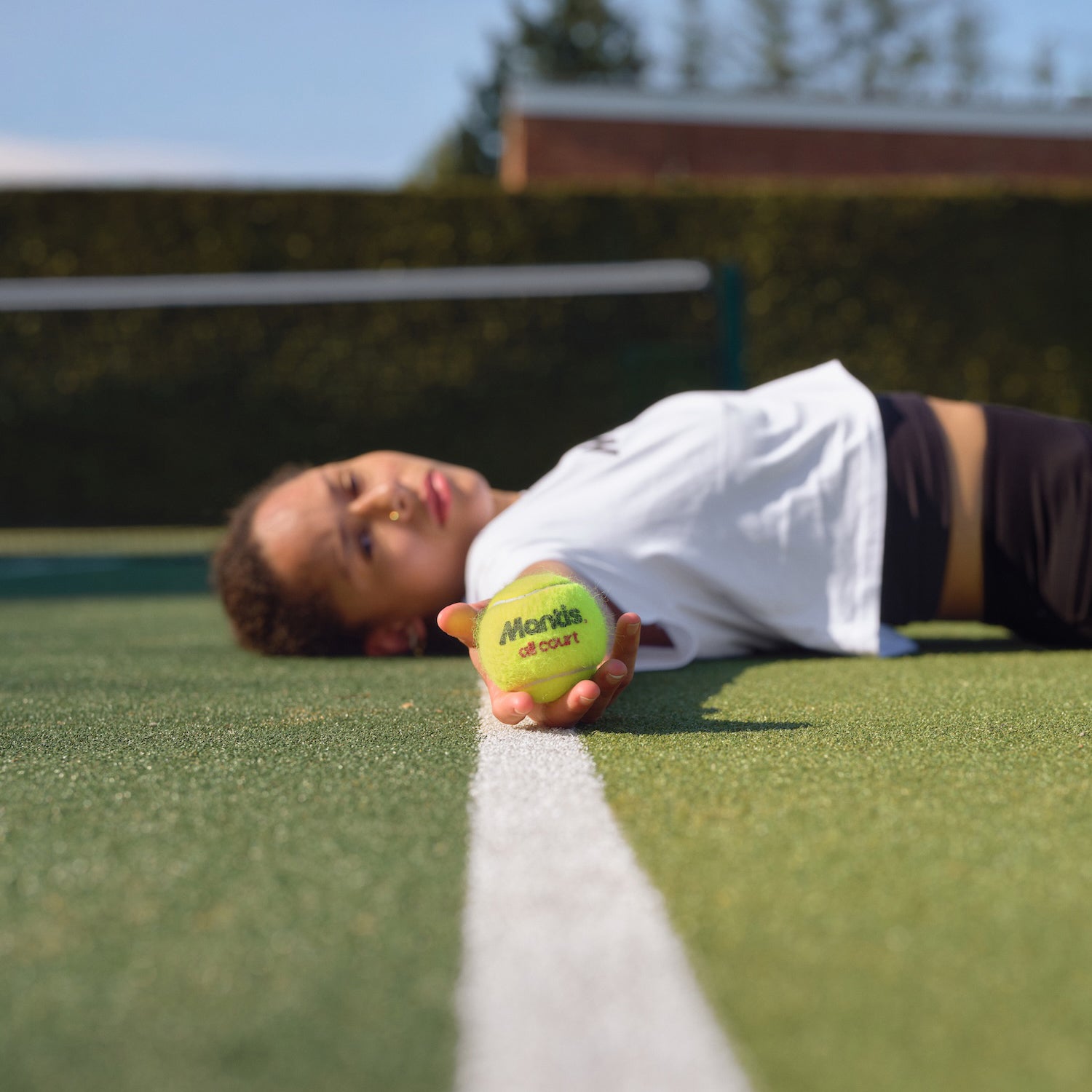
At Mantis, we believe tennis is at its most inspiring when it brings people together. Nowhere is this more evident than in mixed doubles – a format that uniquely celebrates equality, teamwork, and strategic synergy across genders. It’s a showcase of athletic brilliance, communication, and respect, and it's just as rewarding for the club player as it is for the Grand Slam contender.
In 2025, the US Open is putting mixed doubles on center court – quite literally. The reimagined Mixed Doubles Championship will feature 16 elite pairings, including some of the biggest names in the sport. The lineup is nothing short of dazzling: Emma Raducanu and Carlos Alcaraz, Iga Swiatek and Casper Ruud, Naomi Osaka and Nick Kyrgios, to name just a few. With nine of the world’s Top-10 women and men involved, this is not a side event – it’s a centerpiece.
Scheduled during US Open Fan Week (August 19–20) at the iconic Billie Jean King National Tennis Center, this year’s mixed doubles event boasts a $1 million prize pool and primetime ESPN coverage. It’s fast-paced (short sets, no-ad scoring), electric, and accessible – a perfect expression of modern tennis.
At Mantis, we’re passionate about the principles mixed doubles embodies. Tennis is one of the few sports where men and women compete side-by-side on an equal footing. That’s not just good sport – that’s good culture. We’re proud to support and amplify formats that reflect the inclusive spirit of our sport, whether it’s on your local court or in the bright lights of New York.
Mixed doubles isn’t just a novelty. It’s the future – and in 2025, the world is finally watching.
A Shared Past: The History of Mixed Doubles
The concept of men and women competing together in tennis dates back to the sport’s earliest days. While lawn tennis emerged in the late 19th century as a socially acceptable co-ed pastime among the British upper class, it quickly grew into something more structured. Mixed doubles began formally appearing in tournament play as early as the 1880s, with Wimbledon introducing the format in 1913.
What made mixed doubles compelling from the start was that it blurred the rigid gender divides so present in other areas of society. In an era when even watching a woman sprint was considered improper, here were men and women trading groundstrokes, communicating strategy, and winning side by side. Mixed doubles offered a rare arena where cooperation across gender wasn’t just permitted—it was the point.
Throughout the early to mid-20th century, mixed doubles became a showcase for tennis as both competition and theatre. The legendary duo of Margaret Court and Ken Fletcher dominated the 1960s, winning all four Grand Slam events in a single calendar year in 1963. Billie Jean King and Owen Davidson followed suit, bringing charisma and showmanship to the format. These weren’t sideshows—they were stars performing in peak form.
By the Open Era, mixed doubles had become a fixture of Grand Slam tennis, though it gradually faded from the ATP and WTA tour calendars. Still, it retained prestige thanks to the big stages: Wimbledon, the US Open, the French Open, and the Australian Open kept the tradition alive. And in 2021, it gained a new platform at the Olympics when mixed doubles returned to the Summer Games in Tokyo, where Anastasia Pavlyuchenkova and Andrey Rublev captured gold for the ROC.
Why Mixed Doubles Lives Only at the Slams
If mixed doubles is such a rich part of tennis history, why do we rarely see it outside of the Grand Slams?
The answer is a cocktail of scheduling, economics, and structural prioritization. Outside of Slams, most ATP and WTA tournaments are segregated in terms of both draw and venue. Even the events that host men’s and women’s tournaments simultaneously (like Indian Wells or the Miami Open) often run separate logistics and marketing efforts. Introducing a mixed doubles component—requiring coordination across tours—adds complexity without guaranteed upside.
Then there’s the commercial layer. ATP and WTA tournaments are incentivized to maximize singles and traditional doubles matches featuring top-ranked players. Mixed doubles, while charming, is seen as less bankable in terms of sponsorships, ticket sales, and television rights. There's also the awkward reality that top singles players rarely enter mixed doubles unless it's a Slam or the Olympics—Roger Federer and Serena Williams famously teamed up at Hopman Cup in 2019, creating global buzz, but such moments remain outliers.
And finally, there’s a player-choice factor. Tennis is a brutally physical sport, and Grand Slams—two-week, five-set grinds for men and long matches for women—stretch players to their limit. For many, mixed doubles is an indulgence, not a priority. Even at the Slams, withdrawals due to injury or scheduling clashes are common. But when it clicks—like when Jack Sock and Bethanie Mattek-Sands bring their flair and chemistry to the court—it’s a joy that fans remember.
Still, it’s at the Grand Slams where the tennis ecosystem allows for something bigger than the tour calendar: a cultural moment. Players cross tours, countries, and comfort zones. And for two weeks, mixed doubles reminds us why tennis is better when it breaks its own rules.
Tennis’s Unique Stage: Gender Equity in Action
No other major sport on Earth features men and women competing together—regularly, meaningfully, and visibly. Tennis does. That alone puts it in rare company.
There’s something almost radical about watching a man and a woman stand shoulder to shoulder on Centre Court, trying to outfox their opponents with a poach, a lob, or a perfectly timed drop volley. Unlike most sports where coed play ends in childhood or is limited to exhibitions, tennis gives gender-integrated competition a real platform.
Why tennis? It helps that it’s a sport of precision and timing, not brute strength. Yes, there are serve-speed differences and stamina contrasts, but in doubles—where court coverage, placement, and communication matter more—those gaps blur. Women can neutralize power with angles, men can lean into baseline consistency, and strategy trumps physiology.
But more than mechanics, it’s about tennis culture. From its country club roots to its global rise, tennis has long treated women as co-equals—at least relative to most other sports. Billie Jean King’s 1973 victory over Bobby Riggs wasn’t just a marketing stunt; it was a milestone that changed perceptions. Today, four of the highest-paid female athletes in the world are tennis players. And at all four Grand Slams, prize money is equal across genders—a rarity in global sport.
Mixed doubles is where all that progress converges. It’s not just women playing professionally. It’s women competing with and against men at the very top of their field. And it’s sanctioned, celebrated, and televised. That’s powerful.
The visual symbolism of mixed doubles—two athletes of different genders, united in pursuit of a common goal—is more than aesthetic. It sends a message: equality isn’t theoretical; it’s practiced. In a world where sports often reinforce division, tennis quietly defies it.
The Road Ahead: Can Mixed Doubles Grow?
There’s a case to be made that mixed doubles should be more than a Grand Slam curiosity. If tennis wants to innovate—without gimmicks—it could lean into the format that already exists, just under-utilized.
Exhibition events like the Laver Cup or United Cup have dabbled in coed team formats with great success. These competitions create moments that social media loves and new fans remember. They offer something different—not by changing the rules but by changing the pairings.
Meanwhile, a few trailblazers have kept the format alive outside the big four. India’s Sania Mirza made a name for herself in mixed doubles alongside Mahesh Bhupathi and later Bruno Soares. Jamie Murray has become a mixed doubles specialist, winning multiple Slams. Coco Gauff, still in the early chapters of her career, has already played with Jack Sock and could help usher in a new wave of stars taking the format seriously.
The ingredients are there: compelling matchups, dramatic rallies, global appeal. What’s needed is infrastructure and investment. That means ATP and WTA coordination, better scheduling, and a willingness to treat mixed doubles not as a novelty—but as a pillar of the sport.
Closing Rally: What Mixed Doubles Tells Us About Tennis
At its best, mixed doubles is more than a format. It’s a metaphor—for balance, for unity, for evolution. It strips away some of tennis’s usual trappings and reminds us why people fall in love with the game: skill, drama, teamwork, unpredictability.
In a moment where sports are grappling with how to reflect a more equitable world, tennis already has a blueprint. Not perfect. Not always prioritized. But real.
Mixed doubles is tennis saying, “Yes, we can play together.” And meaning it.








